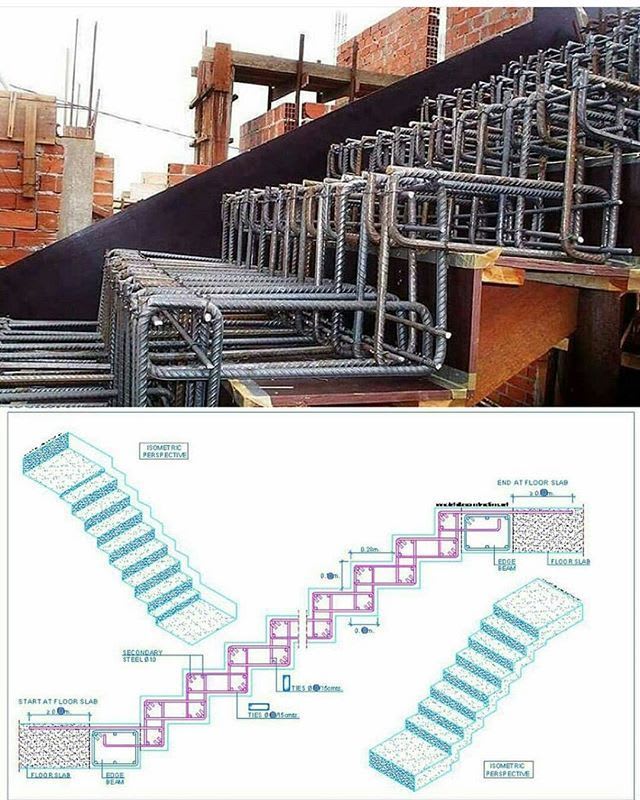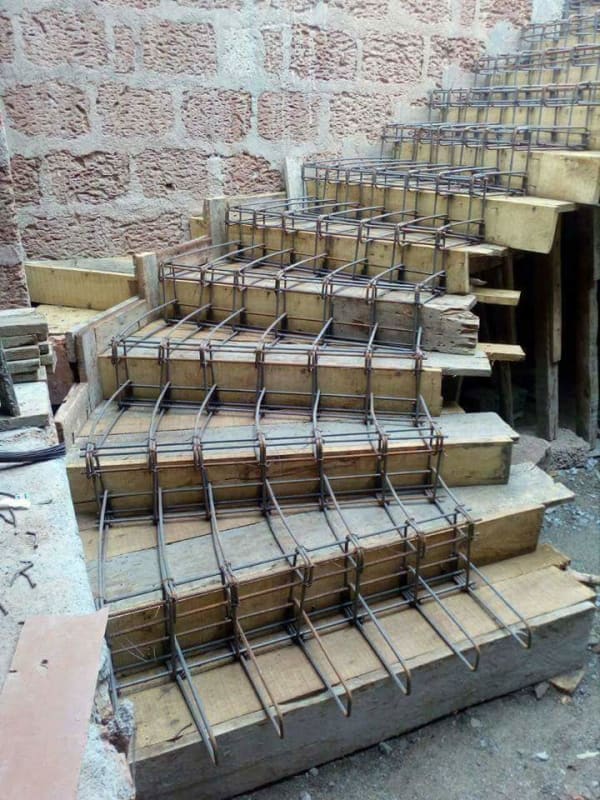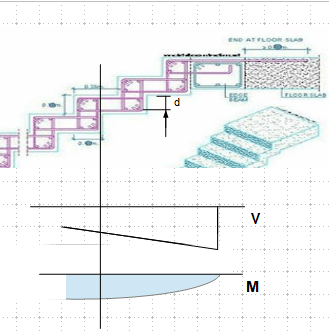I have recently come across a number of photos from various parts of the world where it seems that slabless RC stairs are often used in buildings. Seems to be mainly in South America, Middle East, and Asia. See examples below. I’m wondering if anyone has had experience designing stairs like this and what the various design codes have to say about it? I am from a bridges background so I only have a little experience with stairs and this has usually been just the typical inclined slab with treads.
Apart from being quite elegant from an architectural perspective, I can’t help but think this seems like a pretty inefficient way of supporting a load at two ends. The flexural capacity relies on what looks like a fairly awkward anchorage of the rectangular links around the small transverse bars, with a diagonal strut in overlapping region of the adjacent links. However, presumably the numbers can be made to work with STM.
Any thoughts?


Apart from being quite elegant from an architectural perspective, I can’t help but think this seems like a pretty inefficient way of supporting a load at two ends. The flexural capacity relies on what looks like a fairly awkward anchorage of the rectangular links around the small transverse bars, with a diagonal strut in overlapping region of the adjacent links. However, presumably the numbers can be made to work with STM.
Any thoughts?




